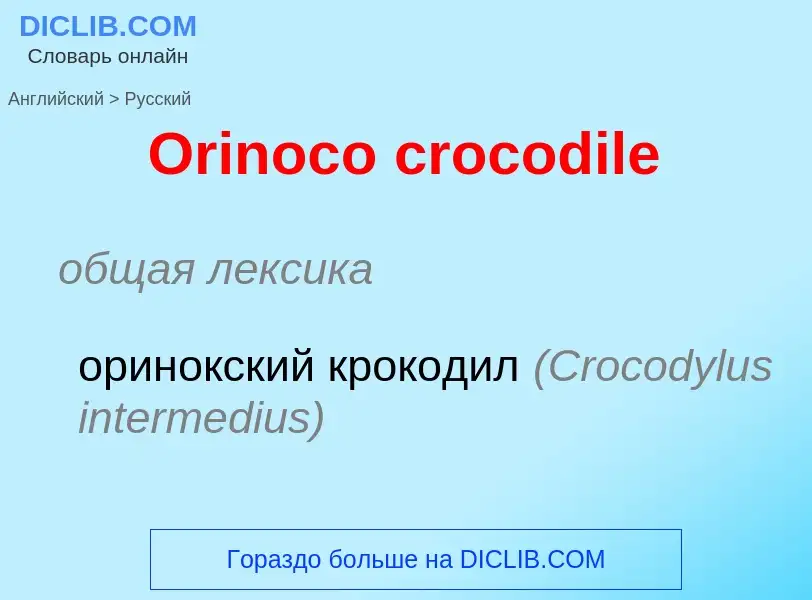Translation and analysis of words by ChatGPT artificial intelligence
On this page you can get a detailed analysis of a word or phrase, produced by the best artificial intelligence technology to date:
- how the word is used
- frequency of use
- it is used more often in oral or written speech
- word translation options
- usage examples (several phrases with translation)
- etymology
Orinoco crocodile - translation to russian
общая лексика
оринокский крокодил (Crocodylus intermedius)
общая лексика
болотный крокодил
магер (Crocodylus palustris)
общая лексика
крокодил Морелета
центральноамериканский крокодил (Crocodylus moreletti)
Definition
Wikipedia

The Orinoco crocodile (Crocodylus intermedius) is a critically endangered crocodile. Its population is very small, and they can only be found in the Orinoco river basin in Colombia and Venezuela. Extensively hunted for their skins in the 19th and 20th centuries, it is one of the most endangered species of crocodiles. It is a very large species of crocodilian; males have been reported up to 6.8 m (22 ft 4 in) in the past, weighing over 900 kg (2,000 lb), but such sizes do not exist today, 5.2 m (17 ft 1 in) being a more widely accepted maximum size. A large male today may attain 4.2 m (13 ft 9 in) in length and can weigh up to 450 kg (1,000 lb), while females are substantially smaller with the largest likely to weigh around 225 kg (496 lb). Sexual dimorphism is not as profound as in other crocodilian species. The coloration is light even in adults.
The biology of the Orinoco crocodile is poorly documented in the wild, mostly due its small population. It is thought to have a more piscivorous diet with an opportunistic nature, resulting in generalist predatory behavior. The Orinoco crocodile is an apex predator, and will take the opportunity to prey on a variety of birds, mammals, and reptiles, including caimans on occasion. The prey base is mostly made up of large predatory fish, challenging the general view by locals complaining about crocodiles hunting local fish to very low numbers. Despite its large size, the Orinoco crocodile rarely poses a threat to humans, despite several reports. Reproduction takes place in the dry season when the water level is lower. Orinoco crocodiles are hole nesters, just like the related Nile, freshwater, and saltwater crocodiles, and they dig holes in the sand to lay their eggs. The females guard the nests and young for several years.



![Orinoco crocodile in [[Villavicencio]], [[Colombia]] Orinoco crocodile in [[Villavicencio]], [[Colombia]]](https://commons.wikimedia.org/wiki/Special:FilePath/Croc inter.jpg?width=200)






 (35279140461).jpg?width=200)
 (35408760825).jpg?width=200)
.jpg?width=200)

